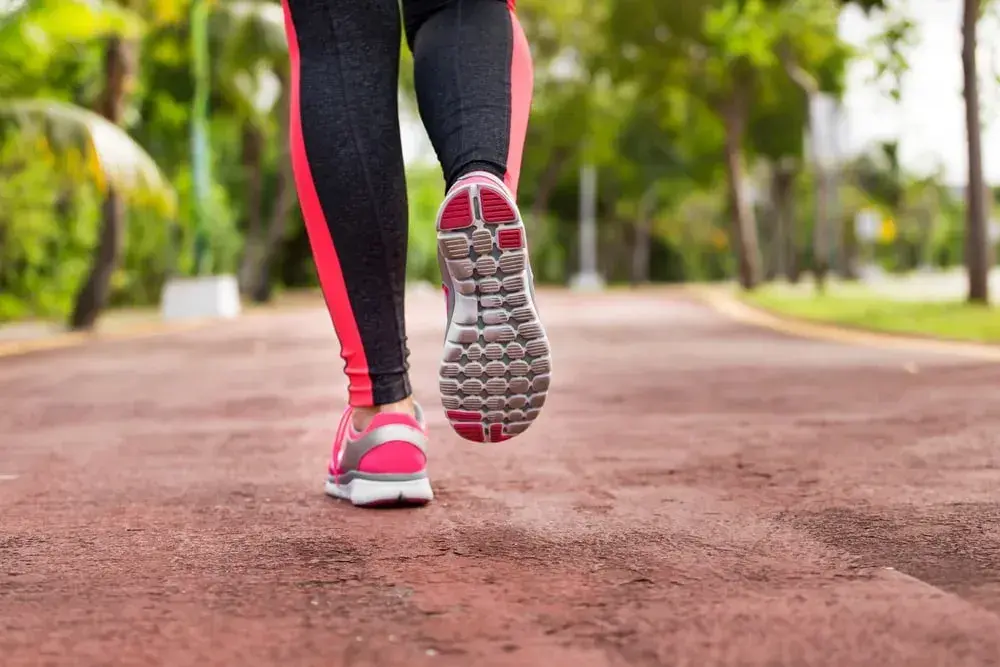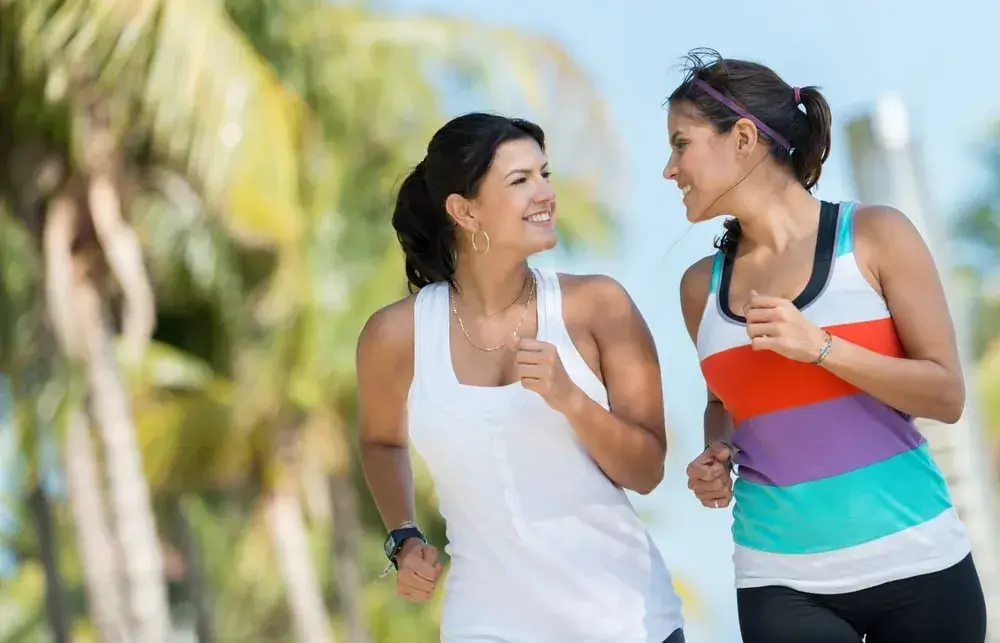4 min read
How To Start A Walking Program For Weight Loss
Garcia Weight Loss
:
Apr 26, 2018 12:00:00 AM

/assets/images/provider/photos/2579185.jpg)
Looking for a workout routine that will help you shed weight? Most people think running is the answer for burning the most calories, but that’s not necessarily the case. A 2015 British study found that people who chose walking as their primary form of fitness weighed less than those who followed an exercise regimen based on running, swimming, or cycling.
Walking is free, available to everyone, and easy to start. It’s also easy on the joints and may even help control appetite better than running. Depending on how much weight you want to lose, increasing your activity with a regular walking program can help you shed half a pound to two pounds per week.
Follow these tips to start a walking program that’s both safe and effective. Remember, you don’t have to punish your body to lose excess weight — you just have to be consistent and increase your activity as your fitness improves.
Check with your doctor
Even though walking is one of the least intensive types of exercise, it’s a good idea to check with your doctor before starting any new exercise program. Make sure your doctor doesn’t have any concerns about your physical condition or want to run any tests before you begin. Increasing your activity level in any way can be tough on your joints, muscles, and heart. Ensure your body can handle a new walking program before you begin.
Regardless of your walking intensity, remain aware of your physical condition throughout the program. Pay attention to signals from your body — if you experience any pain, lightheadedness, or nausea, it may be a sign that you’re pushing yourself too hard. And if you notice anything such as chest pain or severe headaches, put your exercise routine on hold and talk to your doctor.
Invest in good gear
You don’t need a lot of equipment to start walking, but a good pair of shoes is crucial. Poor walking shoes can lead to blisters, foot pain, ankle pain, and other forms of physical discomfort. Once that pain starts, continuing your walking will be a challenge. Go to a sporting goods store or specialty shoe store and invest in a high-quality pair of walking shoes. You may want to try shoes that are half a size larger than your normal shoe size, as feet tend to swell up during a workout.
Invest in good workout clothes, also. While you can walk in nearly anything, good workout clothes can make the experience more comfortable. If you are wearing a sports bra, be sure it fits properly — it should provide support without squishing you. Look for tops and bottoms made from moisture-wicking fabrics that can keep you dry as you sweat, preventing uncomfortable chafing. During cooler weather, wear layers that you can easily shed as you warm up.
Prevent chafing and blisters
Sweat, movement, and clothing can cause your skin to become raw and irritated. Prevent chafing by using petroleum jelly or balm on areas of your skin that rub during walking, such as your thighs, neck, arms, around your sports bra, or any other locations where you may experience rubbing or irritation.
Blisters are often a problem with many types of exercise, and especially so with walking. To prevent blistering, wear socks and shoes that fit snugly so your feet don’t move and rub against your shoe. If blisters begin to appear, cover them with blister pads to speed healing and avoid further irritation.
Start slowly
It’s always a good idea to ease into a new routine. Pushing yourself too hard in the beginning can make it difficult to continue with the program. Start with realistic goals and work up to 30-60 minutes of walking most days of the week. Don’t worry if you need to start with ten minutes a day in the beginning. Every week, increase your walking time by five minutes. The slow increase will give your body time to adjust and avoid injury as you work toward your goal.
If necessary, you can split your walks into shorter increments. If walking for 30 minutes at a time doesn’t fit into your schedule, split it into three 10-minute segments or two 15-minute segments throughout the day. You’ll burn just as many calories and enjoy the same health benefits.
Walk at a brisk pace
The objective of any cardio activity is to get your heart rate up. You want your pace to be somewhat challenging but not difficult to maintain. Ideally, you should be able to speak a few sentences as you walk, but not carry on a full conversation. As your fitness improves, pick up your pace and add in some brief bursts of increased speed. One study found that people who added speedier intervals to their walking program burned up to 20 percent more calories than those who kept their pace consistent.
Soothe your aches and pains
Any new physical activity is bound to cause some aching in your body. For small aches, it’s a good idea to apply ice to the area. If the soreness and aching is altering the way you walk, or your joints begin to ache, take a day off from your program and rest. If the pain does not improve after a few days, see a physical therapist or doctor to make sure you haven’t suffered any serious damage. Pay particular attention to pain behind the kneecap, in the ankles or hips, or around the Achilles tendon.
Track your progress
It can be hard to notice your progress if you don’t track it. Taking note of key metrics in a training journal gives you a visual indicator of how far you’ve come and can be incredibly motivating. You don’t have to get too detailed — just make a note of how far you walked, how long it took, and any other important factors.
Have fun
Any long-term fitness routine should be enjoyable. Finding ways to make your workout fun will help you stick with it until you get the results that you want. Add some fun to your workout with these tips:
- Buy a fitness tracker that provides you with instant feedback and reminders when you need to get more steps in
- Download an app that will give you fitness challenges, suggest routes, and even let you challenge your friends
- Make a playlist of songs that get you moving
- Buy fun, colorful workout clothes that you will look forward to wearing. Pledge to reserve your favorite activewear for workouts!
- Get a friend to walk with you so you can hold each other accountable
- Mix up your walking route so you have new sights and challenges — like more hills
Exercise doesn’t have to be too difficult or boring. Walking is a great way to lose weight and improve your overall health in the process. Need help achieving your weight-loss and wellness goals? Garcia Weight Loss offers personalized weight loss programs designed to help you look and feel your best. Contact us today for your no-cost consultation!



